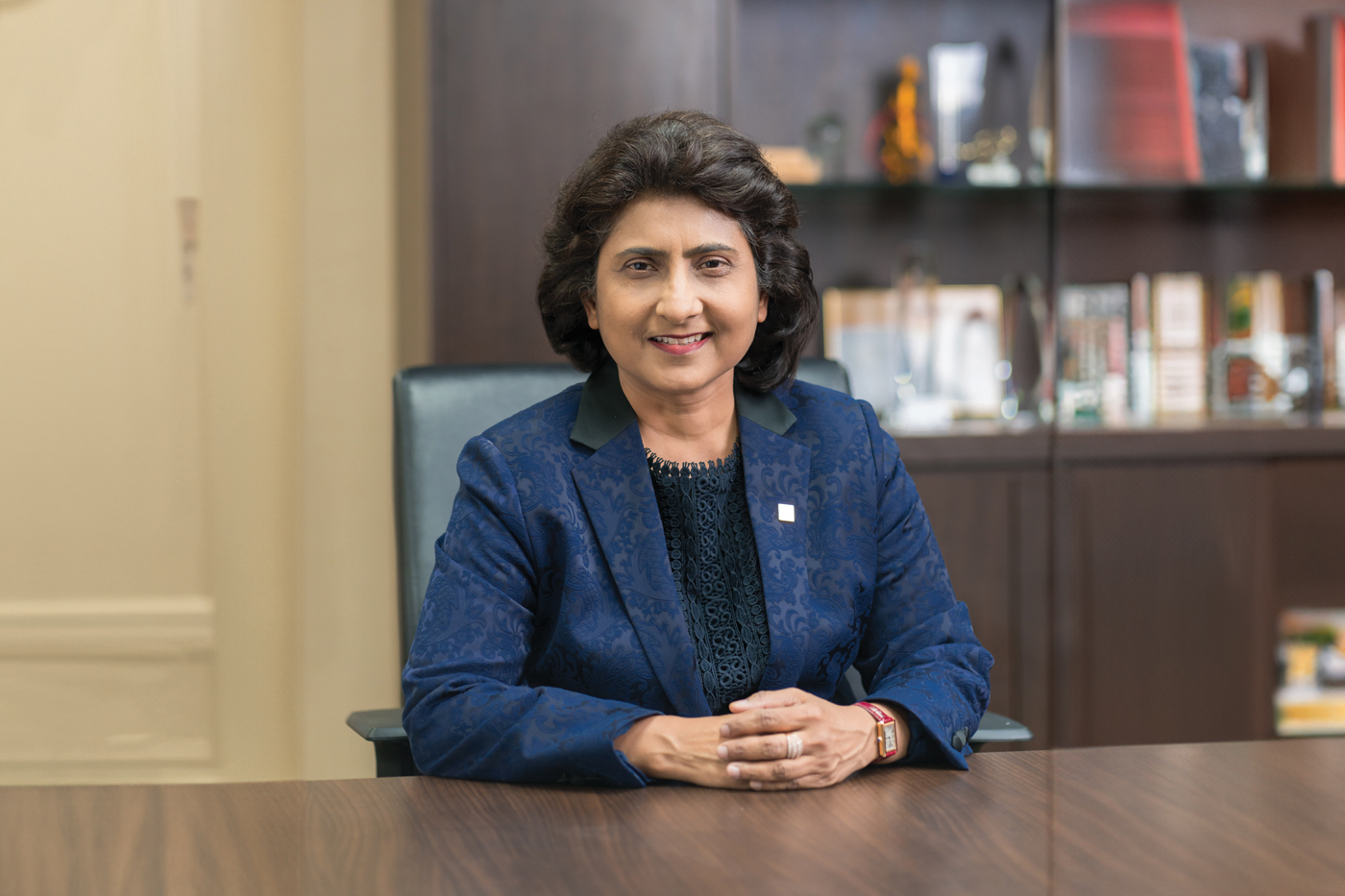‘Build and Experience Small Successes’
When the road ahead is not for the fainthearted.

Reporting by the Banking Insight Editorial Team
The dynamic landscape of banking has elevated regulatory compliance from back-office function to a potential competitive advantage. Studies prove that when compliance leaders work hand-in-hand with strategy teams, sustainable structural solutions are possible. Banking Insight taps into the expertise of Faradina Ghouse, CB, Group Chief Compliance Officer at AmBank Group and Chairman of the Institute’s Compliance Officers’ Networking Group (CONG), on scaling structural change and rising to meet the demands of the profession.
Q: As a leading practitioner who has spent decades perfecting her chosen profession, could you take us through your journey and some of the milestones that have shaped your perspective in banking and finance?
My first job was not in banking but with a stockbroking outfit. Within a year, I moved and joined the custodial services department of a foreign bank. This was the start of my career in banking and the culture there significantly shaped my work ethics and I always considered my joining a foreign bank soon after graduation as an important milestone.
The concepts of empowerment, doing things right the first time in terms of the quality of work, taking responsibility where the ‘buck stops here’, speaking up, and ethical concepts such as conflicts of interest, separation of duties, were deeply ingrained.
Irrespective of which level one operates at, these are some of the key professional values and ethical standards that we hold and operate by. It also remains the key ethical standards that the banking industry specifically does not compromise on. Some 30 years on, these values are continuously enhanced and emphasised in various forms.
These values are practiced by and form the DNA of leaders who set the example and standards for others to follow and emulate. They set the culture of performance and excellence at their respective banks. Some of the other milestones and experiences which I acquired include navigating financial crises, specifically the 1998 Asian financial crisis, which was triggered by currency devaluations leading to insolvencies and economic downturn; and the 2007-2008 global financial crisis, which led to a severe banking crisis, stock market declines, and global economic downturn.
Playing my own small part in the role that I had during these times provided invaluable training in character building, perseverance, the power of teamwork, and leadership qualities.
The other experiences are involvement in a global systems implementation project, various other technical integration projects, assuming a regional and global role, providing exposure to different people from different cultures but sharing the same mission and objectives. These are just some of the important milestones in my career that shaped my perspectives and influenced the approach I take.

Q: Recent momentum point toward a ‘renaissance’ of sorts to revamp the role of the chief compliance officer. Business and compliance teams are increasingly being called upon to find common ground and craft meaningful relationships in order to enhance customer experience, raise productivity, and achieve greater institutional resilience. This is no mean feat. What practical measures can banks take in order to secure ‘quick wins’ in this endeavour?
I cannot negate that the fastest route is by recruiting trained professionals. I personally feel that there are no quick wins or immediate fixes in upskilling staff. This is true especially when new initiatives and areas of focus emerge. The sustainability agenda and Climate Change Principle-based Taxonomy are examples that compliance professionals cannot ignore although this may land specifically within the domains of risk. Training is key and practical training, I believe, is mandatory. A suite of programmes and training strategies are deployed to ensure employees have the skills and competency to navigate the labyrinth and intricacies of banking regulations, evolving landscape of digitalisation, demands for personalised services, and operational efficiency. Webinars and workshops, masterclasses, microlearning modules, mentorship programmes, certification, cross-training programmes, simulations, and case studies are the mainstream approach to upskilling employees and these have worked very well.
Q: The AML/CFT landscape grows in complexity by the minute, especially as threat actors move from the physical to digital realm. As the Chairman of AICB’s CONG, could you share some of the network’s core programmes geared to equip bankers in this regard?
I believe most financial institutions have a very focused approach to the AML/CFT training programme. This is to ensure that the various roles within their organisation that are responsible for AML/CFT-related functions have the required competency to adequately carry out their responsibilities in safeguarding the organisation from the threats of money launderers and facets of financial crime.
Generally, the training programmes will be customised to address the training needs of specialised functions. While I cannot speak for the other financial institutions and CONG itself does not drive the AML/CFT training programmes for its members, as a group, we do share and discuss the evolving nature of the compliance function as well as the training needs and required certifications to equip compliance officers, particularly in the AML space.

Some of the key programmes and certifications are those offered by the AICB, International Compliance Association, and Association of Certified Anti-money Laundering Specialists.
The rapid advancement and innovations in technology have introduced more sophisticated analytics in terms of facial/identity recognition, network analysis, and real-time monitoring capabilities, to name a few.
These developments have created a necessity for technical skills in the AML space, for example, in the areas of data science, machine learning, statistical knowledge, data visualisation and management, blockchain understanding, and cloud computing.
The buzzword now is artificial intelligence; a revolution in itself. I suspect that compliance professionals will soon need to venture into this space, not just to understand the deployment for purposes of financial crime detection and counter measures, but to also protect the organisation from threat of abuse of deploying this technology. These are very interesting times and navigating the AML space and innovative technologies are definitely not for the fainthearted!
Q: What challenges should be expected when embarking on any culture-building exercise?
It is absolutely true that culture cannot be built or changed overnight, but it is important to build and experience small successes. Culture is not just the responsibility of one department; most of the time human resource is expected to and will shoulder this responsibility. It is a collaboration of all stakeholders involved, requiring the right leadership alignment and tone from the top to provide a clear vision of the desired end state.
Identifying and defining core values that will drive behaviours is important. Articulation and communication of these core values and driving mindset and behaviours can be challenging. Established cultures with deep-rooted behaviours will require more time, patience, and persistence in bringing about change. A proactive approach in identifying and addressing resistance through clarifying and resolving misconceptions will be an important feature of the implementation phase. Measuring progress and adjusting to meet the aspired outcomes will be a continuous process. Naturally, these are all easier said than done, but culture is a significant part of branding and all financial institutions will continue to innovate in this space.
Q: As 2023 draws to a close, what’s at the top of your wish list for the year ahead?
First, continue to build on the close collaboration between the banking industry, regulators, and enforcement agencies in thwarting the threat of scams and financial crime. Hopefully with this we can further strengthen controls to protect the public from falling prey to scammers.
Second, peace for the global community so that countries can focus on building their economies.